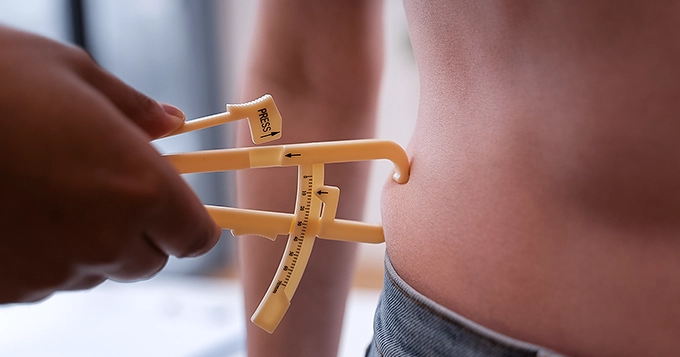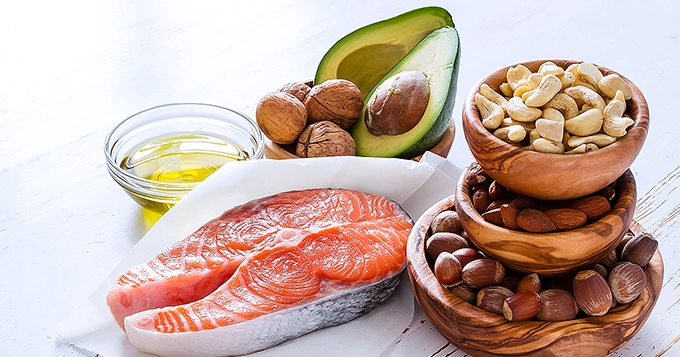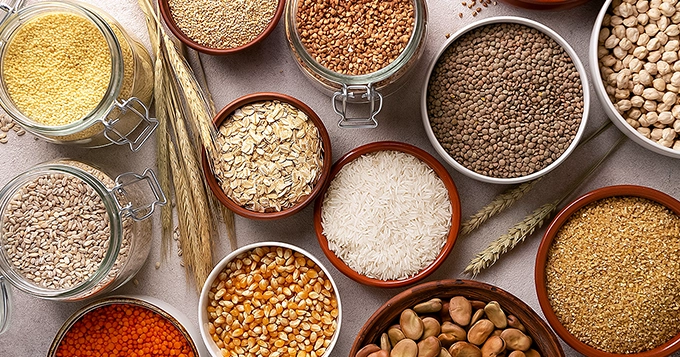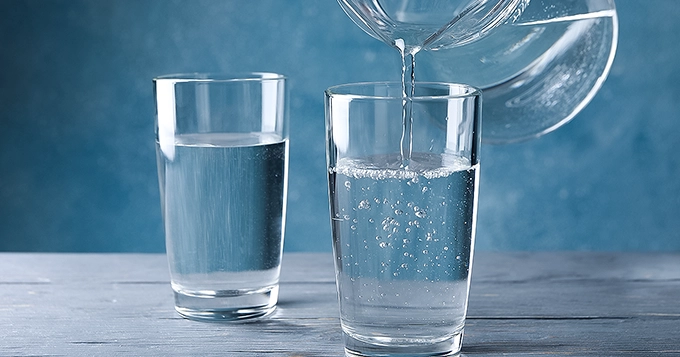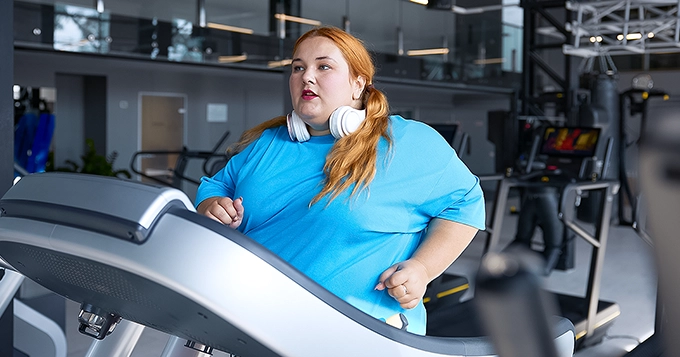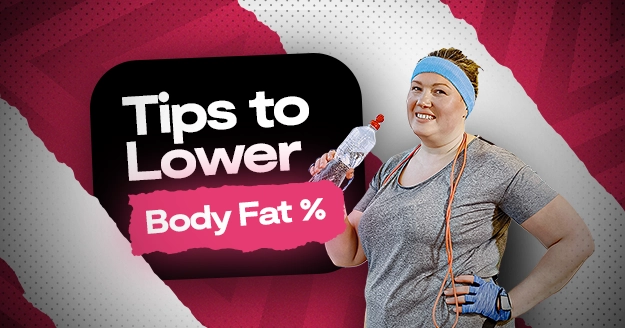What is Body Fat?
Body fat refers to the adipose tissue throughout your body.
It’s essential for several normal bodily functions. It serves as an energy storage and insulation and protects the organ. However, excessive amounts can lead to health problems such as obesity, cardiovascular disease, and diabetes.
Body fat percentage measures the proportion of fat to the total body weight. It’s an important indicator of overall health and fitness, with different ranges considered healthy for men and women.
Types of Body Fat:
- Stored fat. This is also known as fat mass. Subcutaneous and visceral fat are two kinds of stored fat.Subcutaneous Fat – It is the layer of fat beneath the skin. It’s also the most common type of fat. It has several functions, including insulation to regulate body temperature and protection for internal organs.
Excess subcutaneous fat, though less harmful than other types, can still pose health risks when accumulated in significant amounts, impacting body shape and increasing body fat percentage.
Visceral Fat – Visceral fat is harder to see or feel than subcutaneous fat. It surrounds important organs like the liver, pancreas, and intestines. Visceral fat is metabolically active and has the ability to release chemicals and hormones that affect how the body functions.
Numerous medical disorders, such as metabolic syndrome, type 2 diabetes, and cardiovascular disease, are linked to elevated levels of visceral fat.
- Essential fat. This is also known as non-fat mass and is found in bone marrow, organs, and various tissues of the body. Essential fat is the minimal amount of fat needed for regular physiological function.
Individuals seeking good health and fitness should keep their body fat within certain ranges. The American Journal of Clinical Nutrition states that people’s percentages of body fat should be within these ranges:
|
Healthy Body Fat Ranges for Men and Women |
||
| Age Range | Men | Women |
| 20-39 yrs. old | 8-19% | 21-32% |
| 40-59 yrs. old | 11-21% | 23-33% |
| 60-79 yrs. old | 13-24% | 24-35% |
Ideal body fat percentage varies based on gender, age, and individual goals.
It’s important to note that athletes typically have lower body fat percentages because of rigorous training and focus on performance. For male athletes, body fat percentages usually range from 6% to 13%, while for female athletes, the range is generally between 14% and 20%.
How to Lower My Body Fat Percentage?
Lowering body fat and maintaining a healthy fat percentage is crucial for overall health, reducing the risk of diseases like heart disease and diabetes, improving fitness, and enhancing well-being. Here are tips for losing body fat percentage:
Eat Good Fats
It’s better to eat good fats like monounsaturated and polyunsaturated fats instead of unhealthy fats such as trans and saturated fats.
Your body digests fat longer than carbs and protein. Therefore, you can suppress your appetite and prevent overeating by eating healthy fats in moderation.
Sources of good fats include:
- Fatty fishes
- Avocados
- Olives
- Eggs
- Nuts
- Nut butter
- Seeds
Eat a High Protein Diet
Numerous studies have linked higher-quality protein to a decreased risk of obesity and excess body fat.
Eating more protein can help lower body fat percentage due to several factors. Diets rich in high-quality proteins can aid in reducing body fat by enhancing feelings of fullness, preserving muscle mass during fat loss, and boosting the calorie-burning process through diet-induced thermogenesis. Thermogenesis refers to the burning of calories through digestion.
Protein-rich foods include eggs, lean meat, poultry, and tofu.
Eat More Fiber
Fiber provides a sense of fullness and has a slower digestion rate compared to sugars and proteins.
Studies reveal that individuals who consumed 30 grams of fiber daily without any other dietary changes experienced significant weight loss. Research also suggests that fiber effectively reduces stubborn belly fat, which is crucial given its association with health issues like an elevated risk of type 2 diabetes and cardiovascular diseases.
Fiber offers additional health benefits, such as promoting heart health, improving gut health, and reducing the risk of diabetes and certain cancers. Dietary sources of fiber include oats, legumes, fruits, beans, and wheat bran.
Avoid Refined Sugars
Refined sugar is sugar created and processed from naturally occurring sources.
Some refined sugars include white sugar, brown sugar, coconut sugar, palm sugar, and high-fructose corn syrup. All of these sugars may originate from plants, but they’ve all undergone some sort of processing to get their simple, sweet form.
Refined sugars cause rapid spikes in blood sugar levels, promoting insulin resistance and fat storage, particularly around the abdomen. Foods high in refined sugars often lack satiety as well, contributing to overeating.
By opting for whole, nutrient-dense foods instead of refined sugars, individuals can regulate calorie intake, stabilize blood sugar levels, improve insulin sensitivity, enhance satiety, and reduce inflammation, all of which support lower body fat percentage and overall health.
Watch What You Drink
Up to 30% of a person’s daily caloric consumption can come from high-calorie drinks, alcohol, and other highly sweetened-liquids. These drinks have been related to fatty liver disease and other illnesses.
Instead of these high-caloric beverages, drink water instead. Water consumption is crucial for lowering body fat percentage.
Lipolysis, the breakdown of fat, begins with hydrolysis, where water molecules interact with fats to form glycerol and fatty acids. Adequate hydration is crucial for metabolizing fat from foods, drinks, and stored fat.
Start Strength Training
Muscles are metabolically active, which means they help burn calories throughout the day, even at rest. Strength training helps lower body fat percentage by increasing lean muscle mass.
Additionally, strength training stimulates the production of hormones such as growth hormone and testosterone, which aid in muscle growth and fat loss.
Another reason strength training is important is that the intense nature of training sessions can lead to excess post-exercise oxygen consumption (EPOC). EPOC is where the body continues to burn calories at an elevated rate after your workout to replenish energy stores and repair muscle tissue.
This combination of increased muscle mass, higher metabolic rate, and enhanced hormonal response makes strength training an effective strategy for reducing body fat percentage over time.
Do Cardio
Cardio, or aerobic exercise, includes activities that increase your heart rate and respiration, raising oxygen and blood flow throughout your body.
Some examples of cardiovascular exercises include walking, running, swimming, and cycling. Incorporating cardio into your fitness routine can significantly enhance fat-burning and facilitate weight loss.
A review of 15 studies observed a correlation between increased aerobic exercise and reduced abdominal fat among middle-aged women. Additionally, research suggests that regular aerobic activity may promote muscle growth while simultaneously reducing belly fat, waist circumference, and overall body fat.
According to most studies, engaging in 150–300 minutes of moderate to vigorous aerobic exercise per week is recommended, equivalent to approximately 20–40 minutes of daily cardio.
To optimize the benefits of fat-burning cardio exercises, calculate your maximum heart rate by subtracting your age from 220. The ideal fat-burning heart rate range appears to be approximately 70% to 80% of this calculated number. However, the optimal amount of cardio for fat loss may differ from one individual to another.
If you want to boost your efforts to reduce body fat percentage, you might want to incorporate high-intensity interval training, or HIIT, into your cardio routine. HIIT entails alternating between short bursts of high-intensity activities and brief periods of lower-intensity exercise. Research indicates that this type of exercise can lead to a 28.5% increase in total fat loss compared to steady-state aerobic exercises such as power walking.
Monitor Progress and Adjust Accordingly
You can monitor changes, or lack thereof, in your body fat percentage using tools like body fat scales, skinfold calipers, or other methods.
Regularly tracking your progress makes it easier to highlight areas where necessary adjustments, either in your diet or workout, must be made.
You can also work with a professional, a personal trainer, or a dietitian who can guide you in adjusting your exercise routine or caloric intake to make sure you continue progressing toward your goal.
Manage Your Stress and Get Enough Sleep
Effective stress management and getting enough sleep are frequently disregarded elements influencing weight loss. Chronic stress and sleep deprivation can reduce hormone balance, increase appetite, and impede your progress toward your fitness goals.
Researchers discovered that, while maintaining the same caloric intake, dieters who reduced their sleep during 14 days lost 55% less fat weight. After eating, they had less energy and felt less content and hungry.
Aim for 7-9 hours of restful sleep each night and engage in stress-relieving practices such as meditation, yoga, or pursuing enjoyable activities.
